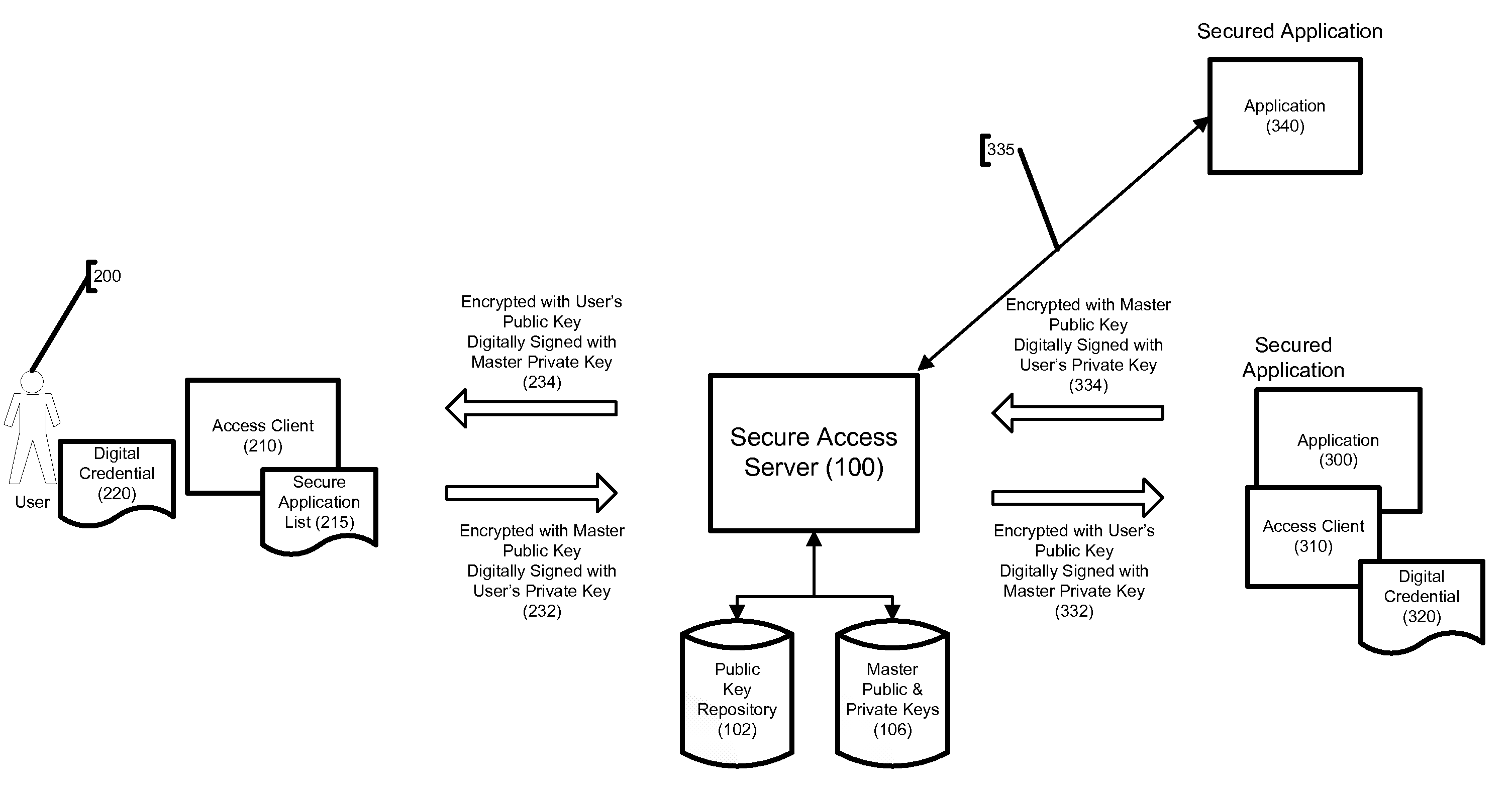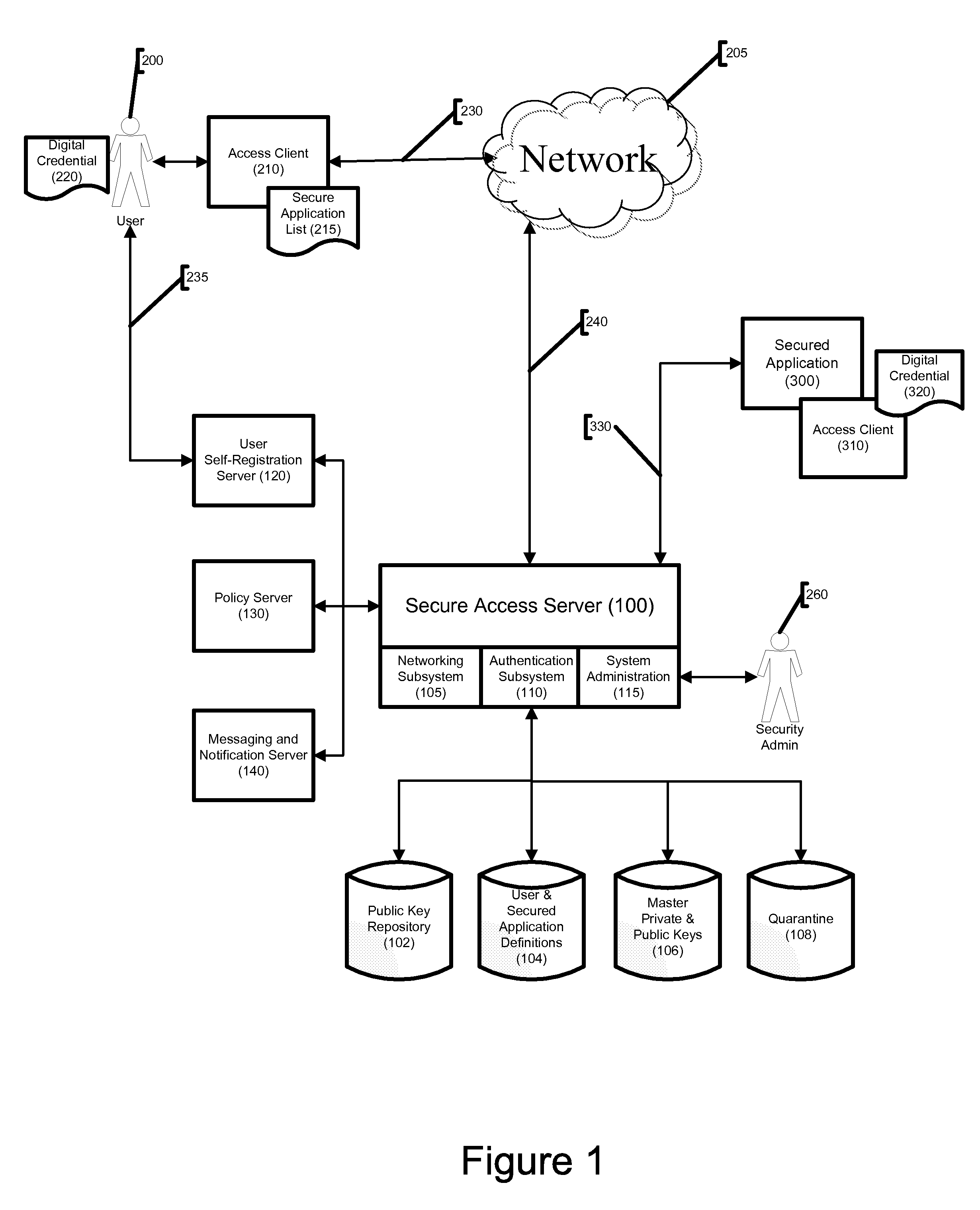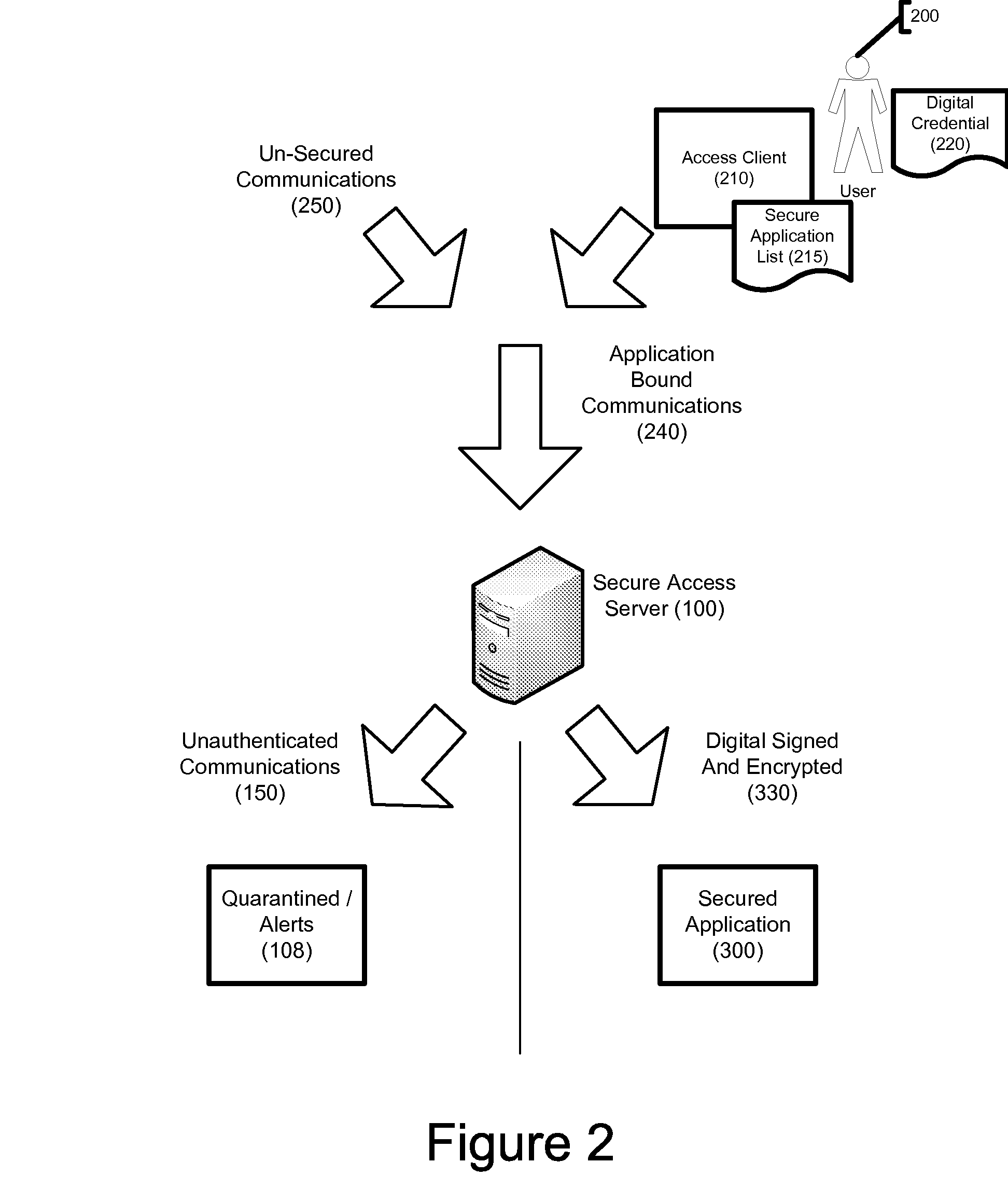System and Method for Securing Software Applications
- Summary
- Abstract
- Description
- Claims
- Application Information
AI Technical Summary
Benefits of technology
Problems solved by technology
Method used
Image
Examples
Embodiment Construction
[0029]The present invention employs client / server network architecture in order to restrict communication with software applications to authorized users. Those skilled in the art will recognize that computer networks may be set up in many different ways, and that the terms “server” and “client” may encompass a variety of hardware configurations. Generally, a “server” is a computer system that provides services to other computer systems, the “clients”, over a computer network. Though used in the singular format herein, in practice the functions of a “server” or “client” might be spread among multiple pieces of computer hardware, so long as such multiple pieces of hardware are able to act together. The primary server component of the present invention, referenced herein as Secure Access Server 100, is preferably installed behind a firewall within a computer network. The primary client component of the present invention, referenced herein as Access Client 210, is software installed on ...
PUM
 Login to View More
Login to View More Abstract
Description
Claims
Application Information
 Login to View More
Login to View More - R&D
- Intellectual Property
- Life Sciences
- Materials
- Tech Scout
- Unparalleled Data Quality
- Higher Quality Content
- 60% Fewer Hallucinations
Browse by: Latest US Patents, China's latest patents, Technical Efficacy Thesaurus, Application Domain, Technology Topic, Popular Technical Reports.
© 2025 PatSnap. All rights reserved.Legal|Privacy policy|Modern Slavery Act Transparency Statement|Sitemap|About US| Contact US: help@patsnap.com



